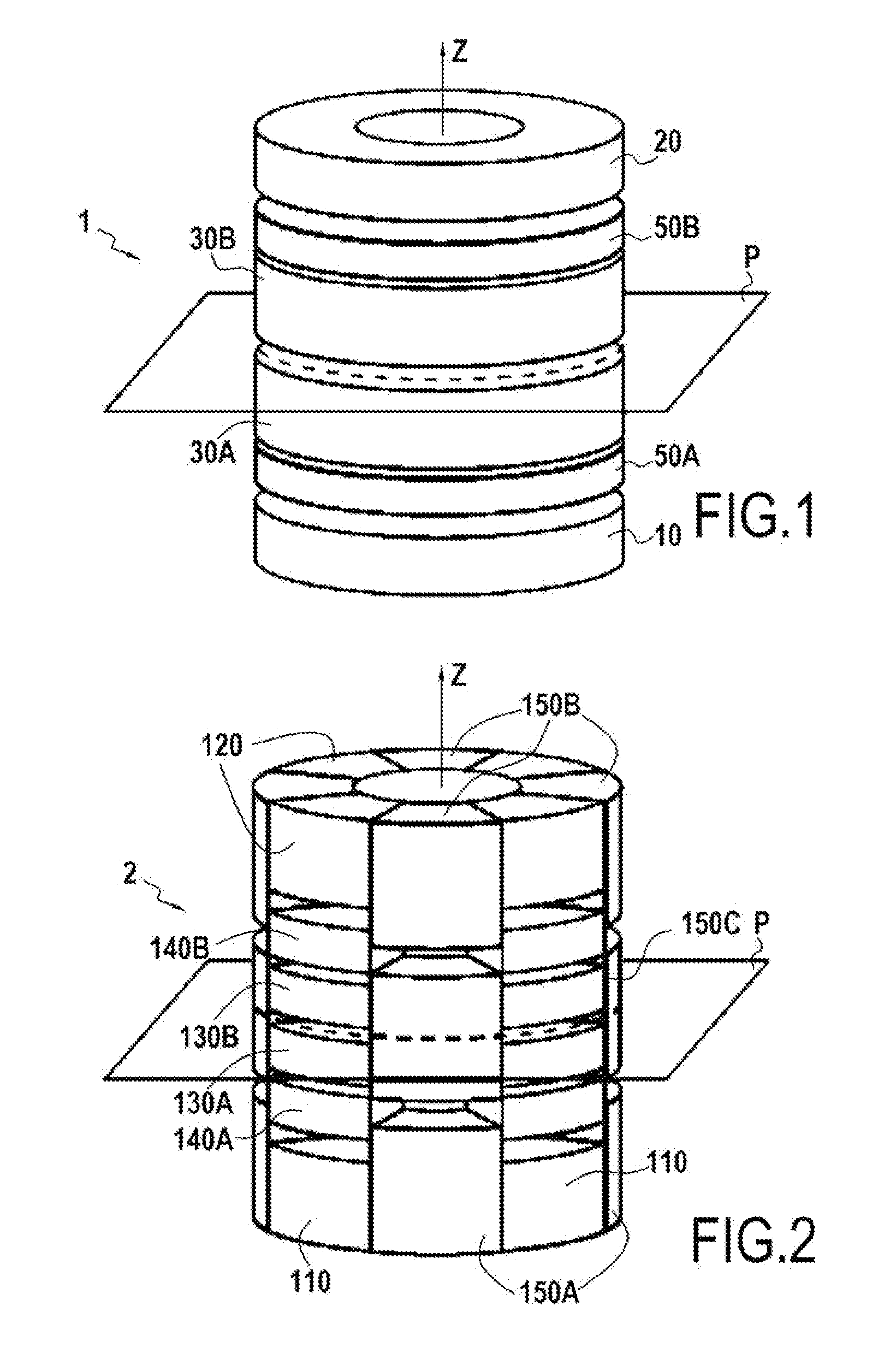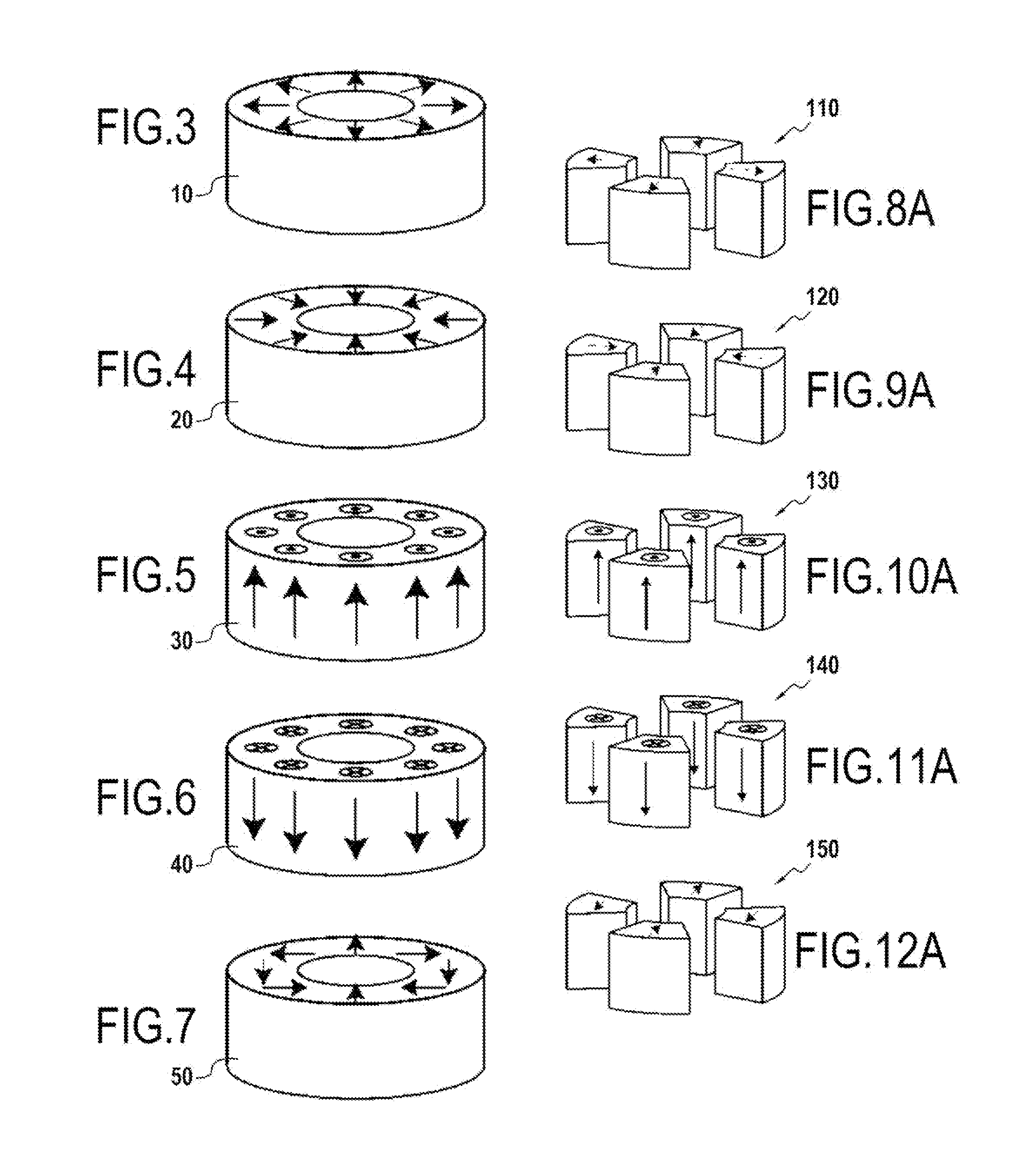Magnetised structure inducing a homogeneous field, in the centre thereof, with a pre-determined orientation
a magnetised structure and homogeneous field technology, applied in the field of magnetized structure, can solve the problems of bulky devices and difficult to move, limited remanence of so-called permanent materials, and difficult to mov
- Summary
- Abstract
- Description
- Claims
- Application Information
AI Technical Summary
Benefits of technology
Problems solved by technology
Method used
Image
Examples
Embodiment Construction
[0059]Generally speaking, the present invention relates to a way of assembling magnetized parts in order to create a homogeneous and intense magnetic field at the center of a structure. The field induced at the center may have an arbitrary orientation relative to the axis of the structure. The orientation and homogeneity of the field are controlled by the number, disposition, and dimensions of the components subject to certain general rules that are discussed below. Such a structure is of particular benefit for NMR and MRI and in particular makes it possible to create a field pointing essentially at the so-called “magic” angle (arctan θm=√{square root over (2)}) to the axis of the magnetized structure.
[0060]The present invention makes it possible to produce a family of essentially cylindrical permanent magnets that produce an arbitrarily homogeneous magnetic field having a direction relative to the axis of the cylinder that may vary over the range 0° to 90°.
[0061]The general structu...
PUM
 Login to View More
Login to View More Abstract
Description
Claims
Application Information
 Login to View More
Login to View More - R&D
- Intellectual Property
- Life Sciences
- Materials
- Tech Scout
- Unparalleled Data Quality
- Higher Quality Content
- 60% Fewer Hallucinations
Browse by: Latest US Patents, China's latest patents, Technical Efficacy Thesaurus, Application Domain, Technology Topic, Popular Technical Reports.
© 2025 PatSnap. All rights reserved.Legal|Privacy policy|Modern Slavery Act Transparency Statement|Sitemap|About US| Contact US: help@patsnap.com



